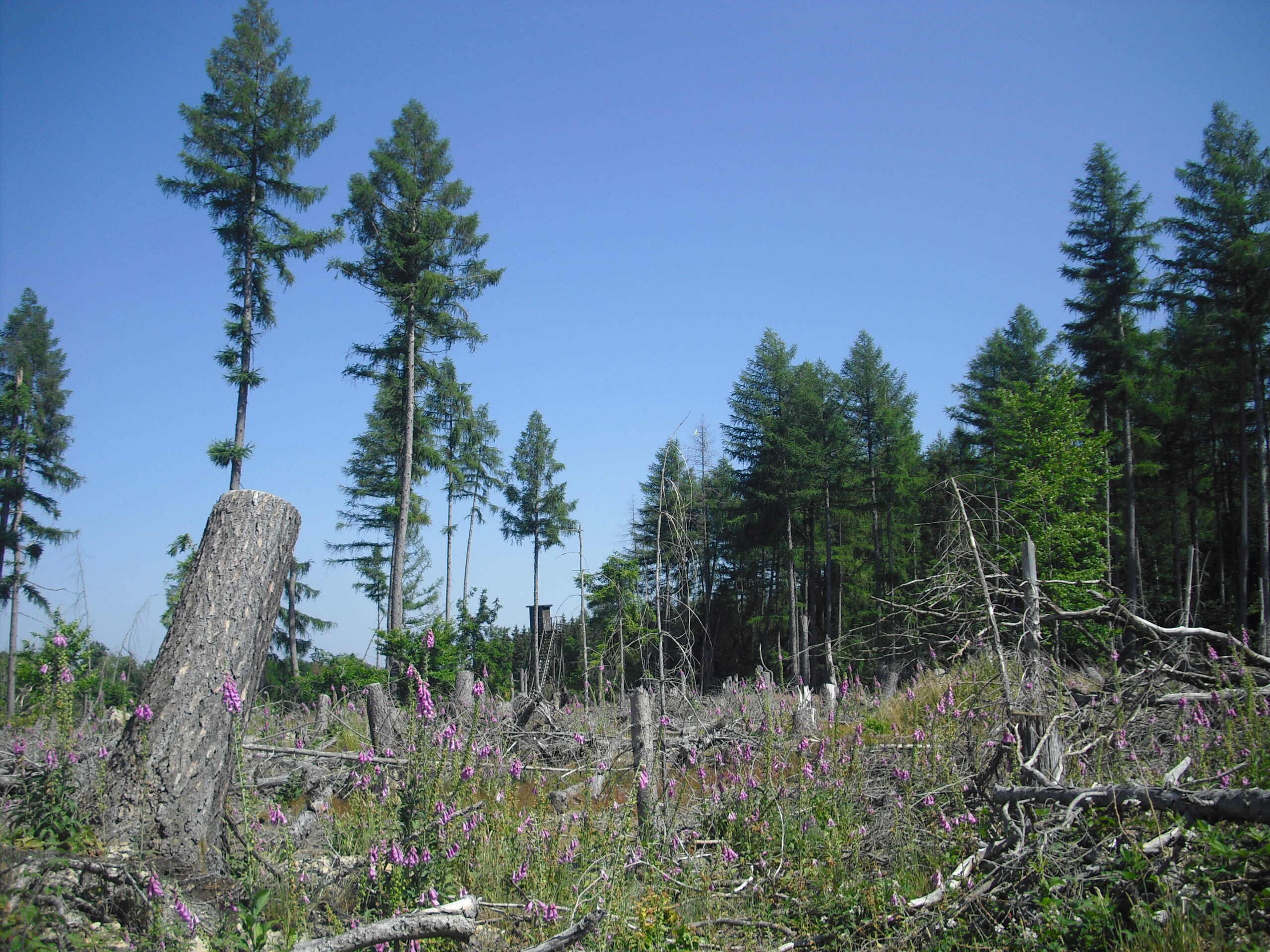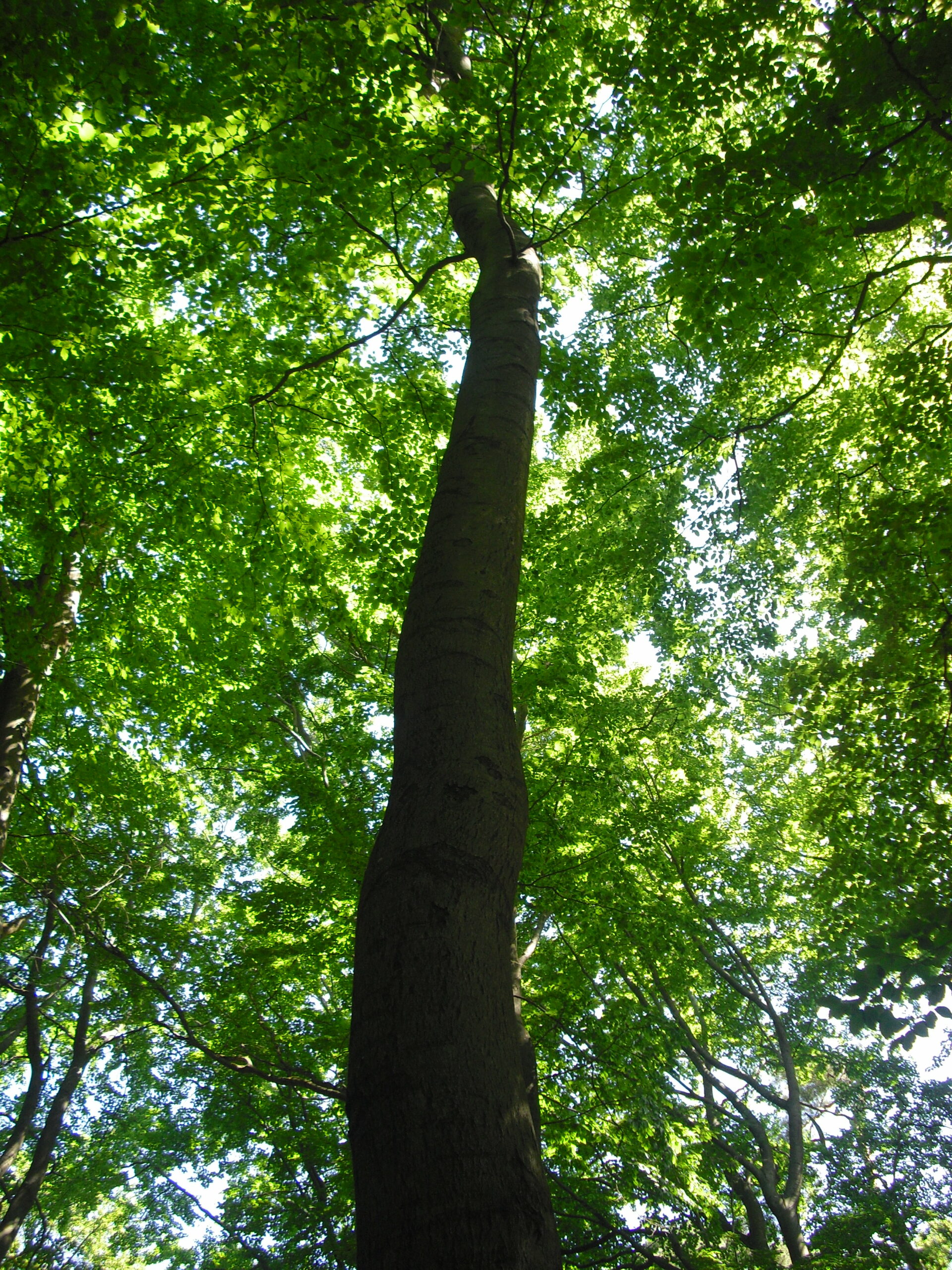Introducing the experimental artwork
In June 2022, I embarked on a journey of discovery in a forest in the Frankfurt am Main region of Germany. With a small group of social and natural scientists, artists, and informed citizens, we ventured through five stations in the forest, guided by a dendrochronologist and two artists. The action is about discovering the secrets of the forest, gathering dead wood, humus soil and other treasures that had settled on the fallow land, before bringing them to a nearby Botanical Garden. As I observed with my pocket camera, notebook, and pen, I sought to uncover the moral and ethical dilemmas of environmental (in)justice and resource use in the Anthropocene.
Observing quartzite mining
We visit a quartzite factory, the largest of its kind in Europe, that has been in operation for over a century and a half (Fig. 1). Quartzite is a vital element in road construction and other products. We ascend to an observation platform built for tourists to have a better view of the quarry. It is scorching hot, much higher than the average temperature at this time of year, a clear indication that we are now living in the Anthropocene.
A viewing platform for tourists may not be built to show the environmental destruction caused by mining, but to celebrate the mining tradition. As I gazed upon the mine from the platform, I could not help but ponder the impacts of this industry on the surrounding landscape. How many trees and species have been displaced by quarrying? What other roads and products are constructed with the quartzite? How many people depend on mining for their livelihoods, and what are the labor conditions of the operators of the tiny trucks seen from the distance?
A local participant emphasized the importance of clay as a byproduct of quartzite mining, which was readily available to the local community to utilize. The quartzite mine’s response to the exploitation of nature can thus be seen as a form of gift-giving, in this case, returning clay to local people for pottery-making. This practice is in line with Marcel Mauss’s understanding of gift-giving, which stipulates that a gift must be given, accepted, and returned (Mauss, 1925). The clay produced from quartzite mining is thus a residual product that can be reused free of charge by interested parties.
We observe the devastating effects of the Anthropocene on the nearby platform, with the dieback of trees and the lack of new growth. Yet the area is still being repopulated with plants and flowers, such as foxglove, despite its potential toxicity to humans. The mine, however, stands out as an exception, with no visible signs of regeneration.

Imagining the wind
As I walked along the dusty, sandy road with the group, strong winds had uprooted several trees. Much like the area before, the environment here enabled the proliferation of other flora and fauna, with foxglove particularly abundant (Fig 2). Metaphorically, the wind could also be understood as a ghost of the Anthropocene, carrying with it the vestiges and signs of past ways of life still charged in the present, as described by Lowenhaupt Tsing et al. (2017, G1) in the book “Arts of Living on a Damaged Planet: Ghosts of the Anthropocene”.
The mayor, who joined the fieldtrip for a short time to give a speech, astounded me with his revelation that the most significant threat posed by tree death was not ecological devastation, as I had anticipated, but economic detriment. People had planted spruce trees in a habitat not meant for them, creating their own catastrophe for quick profit – a critique voiced in other contexts by the Frankfurt School and Herbert Marcuse’s (1982) notion of the irrationality of technical rationality. Despite this, the mayor saw hope in the timber, which could be sold to make roof battens and pay the local kindergarten teacher. He also pointed out the danger of dependence on imports from other parts of the world when timber is not planted locally.

Determining the age of a beech tree
As we approach the beech tree, we are immediately engulfed by its heavy canopy, shielding us from the harsh sunlight and providing a cool refuge on this hot day. Its thick foliage blocks out most of the light, leaving little space for other plants and trees to grow beneath it. Despite its intimidating size, we are still charmed by its beauty and grace (Fig 3).
I was astonished to find that the beech tree before me, with its wire wrapped around it and a sign with the number 2 on it, was actually 212 years old. As it was rather slender, I had initially guessed it to be no more than 30 years old. My assumption was quickly disproved, however, by the dendrochronologist, who explained to me that the thickness of the tree is not the only factor in determining its age, as the annual rings can easily be made narrower by environmental influences.
We were all taken aback by the shrill sound that accompanied the dendrochronologist’s drilling of the beech tree, and felt a wave of regret for disturbing the tree without its permission. Regardless, the sample was taken and the borehole intentionally left open to foster healing. It is a testament to the beech tree’s remarkable fortitude, its ability to survive and recover from human interference; in time, it will even heal over the wound, but the impact of our intrusion will remain, a lasting reminder of its strength.

Militarizing the forest
The ruins of the Roman fort on the Limes invite us to reflect on the military use of the forest over so many centuries. Despite the passing of time, the moral implications of such use remain unchanged. We come across a Bundeswehr site that was an American military base from 1949 to 1997, a reminder of the controversial debates surrounding national security and defence. The tall wire fence with barbed wire rings at the top looms strangely, enclosing the Bundeswehr’s second largest ammunition depot. The sight of this testament to years of military activity stirs up a range of emotions: frustration and sadness. By looking upon this symbol, we are provoked to consider the collective human experience of hardship and progress.
Taking forest residues
The last stop is a spruce forest, its life force now extinguished by the bark beetle. We don our gardening gloves and, with shovel, rake, and hoe in hand, set about carefully packing buckets with the dead wood, soil and other things. Two participants venture further into the fallow land, searching for larger branches and trunks, while I work closer to the van, pushing aside the top soil with a hoe and digging out the rich humus beneath. We take turns lugging the buckets to the van, and then passing them up the small stairs to the people inside. Amid the digging, I find three caterpillars hidden in the soil, their fate unknown. I pause, considering their future. With a heavy heart, I set two aside, hoping they will survive in the destroyed forest, while the third I keep in the bucket as an invisible part of the artwork in the Botanical Garden. Right or wrong, I can only hope I have done justice to the ruined landscape, and that the caterpillars will find a new home.
Installing the artwork and reflecting the experience
The next day, I was filled with a sense of wonder and awe as I watched the installation of the artwork in the Botanical Garden and experienced the inauguration ceremony (Fig. 4). I was deeply moved by the moral dilemmas and thought processes that were triggered by the actions in the forest and the outcome of the experimental artwork. I allowed my senses to open up to fully receive a holistic understanding of the experience (see Pink, 2009). I felt the profound importance of performative actions like these to impart moral values, and in this case, to bring awareness to the environmental (in)justice that we face in the Anthropocene.

References
Lowenhaupt Tsing, A., Swanson, H., Gan, E., & Bubandt, N. (2017). Arts of Living on a Damaged Planet: Ghosts of the Anthropocene. University of Minnesota Press.
Marcuse, H. (1982). Some Social Implications of Modern Technology. In Arato, Andrew; Eike, Gebhardt (eds.). The Essential Frankfurt School Reader. (S. 138–162). The Continuum Publishing Company.
Mauss, M. (1925). Essai sur le don. Forme et raison de l’échange dans les sociétés archaïques („An essay on the gift: The form and reason of exchange in archaic societies“). L’Année Sociologique.
Pink, S. (2009). Doing Sensory Ethnography. SAGE Publications Ltd.